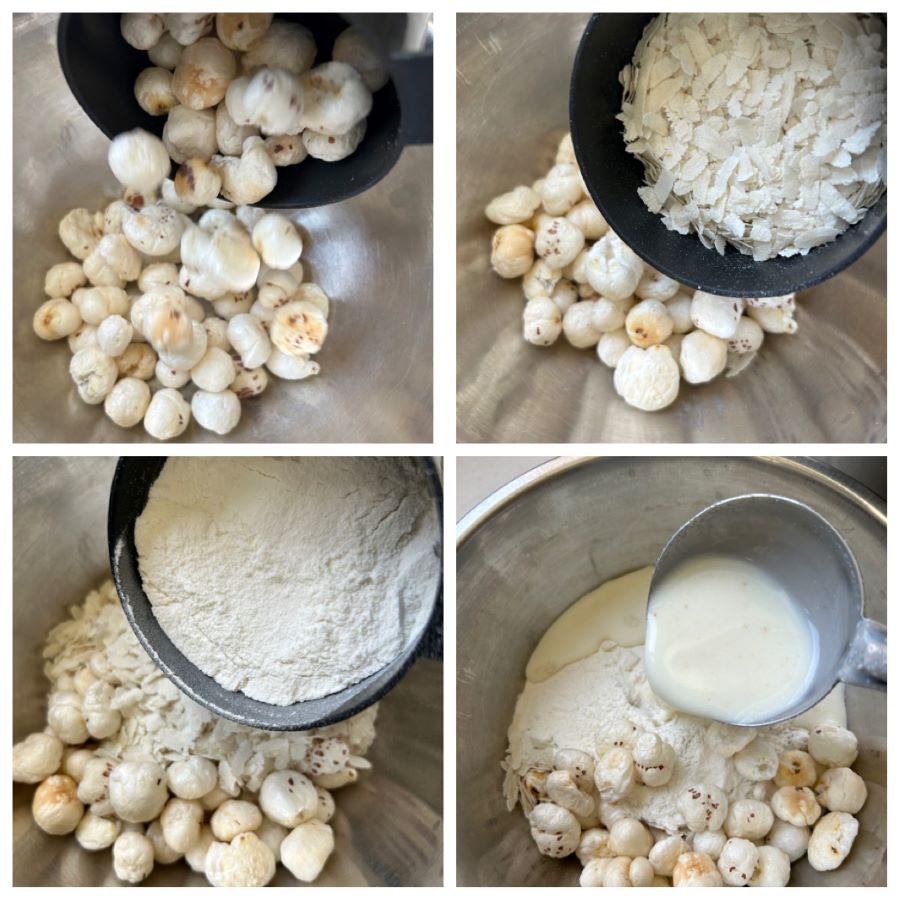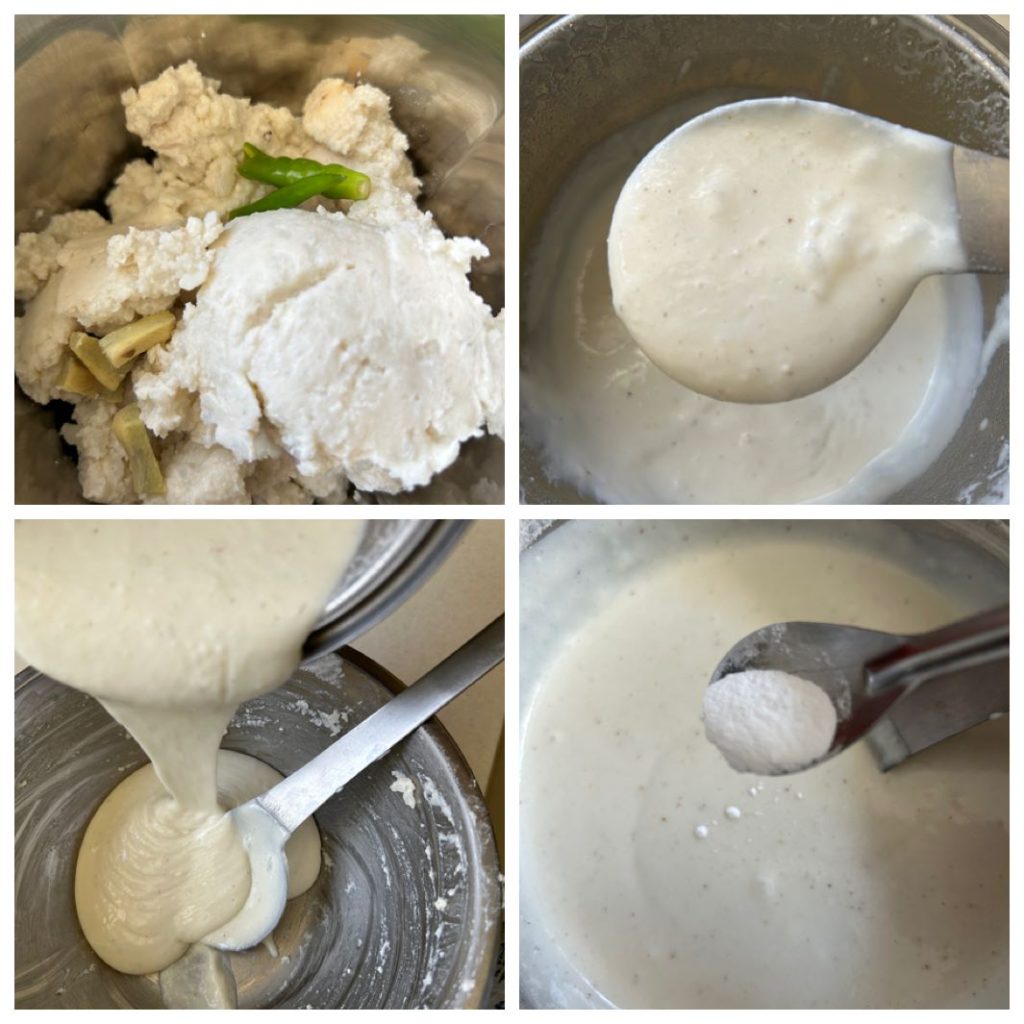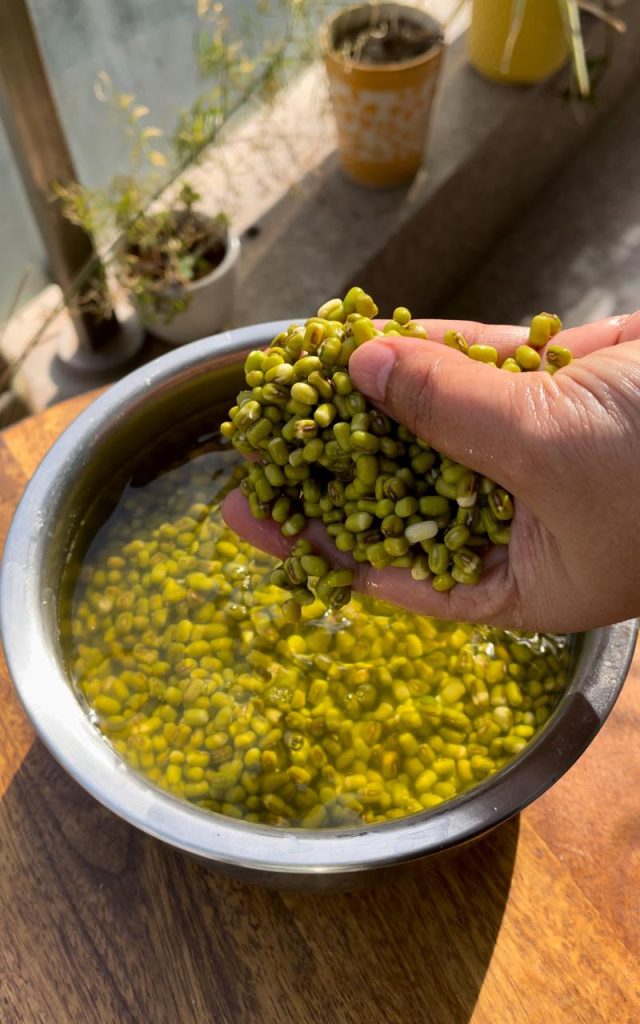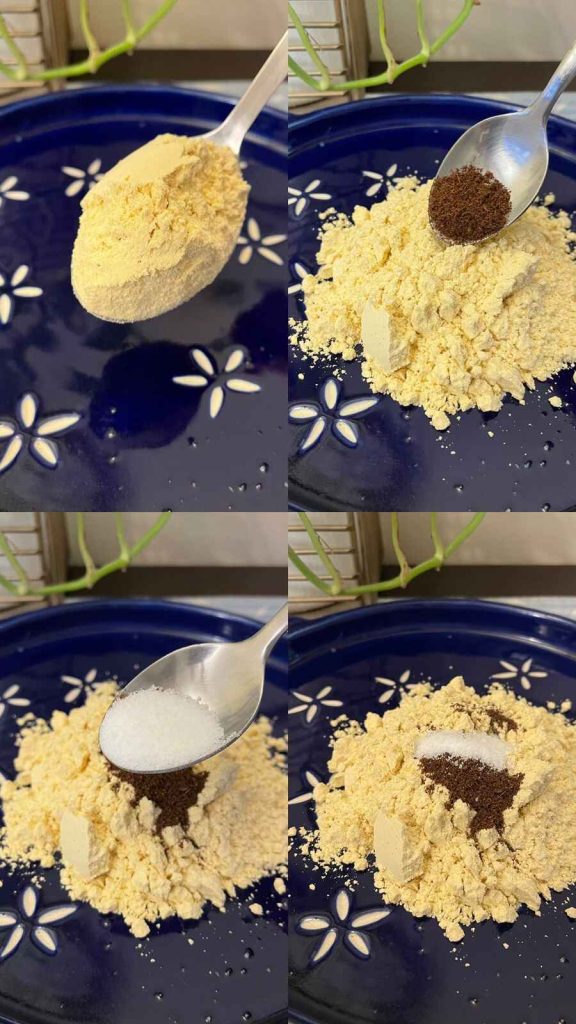
I try to have atleast 2 gluten free meals in a day. I don’t have any gluten allergy but I think it keeps my system in check. There are exceptional days when all my meals have gluten but mostly I prefer breakfast and dinner to be gluten free.
Millet, an ancient grain has gained quite a well deserved popularity in recent times. Traditional millets have found their way back into households quickly winning hearts. It’s naturally gluten free and offers tremendous health benefits. There are countless reasons why you should have 1 meal in a day that contains millets.
There are several types of millets you can choose from like foxtail millets, sorghum millet, pearl millet or finger millet. But today we will use Barnyard Millet. In addition to millets, these pancakes also include foxtnuts (makhana), flattened rice (poha) and buttermilk which is a great source of protein.

Benefits of Barnyard Millets
- Barnyard millet or Sanwa rice as it is popularly known has high levels of protein, calcium, iron, minerals, and vitamin B complex.
- It is also low in carbohydrates making it a boon for those with type II diabetes and cardiovascular diseases.
- It contains high amounts of iron- richest amongst all millets and cereal grains.
- It is low in calories and a good source of highly digestible protein
Benefits of Foxnuts/Makhanas
Makhanas were previously so under-appreciated. They have become more popular in recent years as people have become more health conscious.
- Foxnuts are a fabulous source of protein, magnesium and potassium. Just 100 grams of foxnuts can give your 9 grams of quality, easy to digest natural protein.
- They have high calcium content.
- Studies have shown that foxnuts aid in management of blood sugar levels.
- Fox nuts are high in astringent properties and can help prevent kidney problems.
I tried these pancakes for the first time today and surprisingly they came out so nice and flavourful. Even my 10 year old son loved it and ate 4 of these for breakfast. They are crisp on the outside and soft on the inside. I paired it with my Tangy Spicy Peanut Chutney for more flavour and to add more protein in my diet.
For more savoury pancake recipes you can check out my Semolina Pancake recipe or this Iron Rich Pancake recipe.

Main Ingredients list: (check the full list below)
- Barnyard millet: It tastes like broken rice and is also a fabulous substitute for rice. They are also ideal for summers as this millet has cooling properties. In case you can’t find barnyard millet flour, you can substitute it with other millets like pearl millet or sorghum flour.
- Flattened Rice/Poha: It is a delightful and nutritious breakfast option with numerous health benefits. It is also an exceptional vegetarian source of Iron. If you can’t find poha, you can use rice flour.
- Foxtail Nuts/Makhana: Makhanas add a great nuttiness and chewy texture to these pancakes.
- Buttermilk: It is a great source of protein. In addition to that, it easy to digest and also adds a natural tangy flavour which tastes delicious. I used homemade buttermilk which was freshly made while making cultured ghee at home. You can check out the recipe here- Homemade Ayurvedic Cultured Ghee. If you can’t find buttermilk, use yogurt or homemade curd.
Recipe: makes 12 pancakes
Ingredients
- Barnyard Millet flour: 1 cup
- Flattened Rice/ Poha: 1/2 cup
- Foxnuts/Makhana: 3/4th cup
- Buttermilk: 2 cups
- Water: 1/2 cup or as required
- Ginger: 1” long
- Green Chilli: 1
- Salt to taste
- Baking soda: 1/2 tsp
- Chopped Vegetables- Onion, Capsicum, Tomato: 2 cups
- Chat masala: a pinch (optional)
- Curry Leaves: Handful
- Oil/Ghee for cooking
Instructions
- In a large bowl, add foxnuts, barnyard millet flour and poha. Now add buttermilk and mix well.

- Cover and let it rest for 20 minutes. The foxnuts and poha will soften and absorb the buttermilk. At this point it will have a thick consistency.
- Now add everything to the blender. Add salt, ginger and green chilli. Then add water and blend to a smooth consistency batter. Add more water if required but add little at a time. Do not make a runny thin batter.
- Empty the batter in a bowl and add baking soda. Mix gently.

- Add chopped vegetables and curry leaves in about bowl. Sprinkle some salt and chat masala if you like and mix well. Keep aside.
- Heat a non-stick pan or cast iron pan. Bring it to medium heat. Spread one ladle full of pancake batter on the pan. Add oil/ghee around the edges.

- Now add some vegetables on top and press the vegetables gently. Cook on medium flame for 3 minutes or till the edges brown. Carefully flip and cook the other side for another 2-3 minutes or till it becomes nice and golden brown.
- Cook the remaining pancakes in the similar way. Serve hot with chutney of your choice.
Notes:
- Always remember not to add Eno as a leavening agent. It’s an antacid and it’s bad for health. Baking soda will do the similar job and is not harmful when taken in moderation.
- Cook these pancakes on medium heat patiently. Do not increase the flame or the pancakes will not cook evenly and might remain raw from the middle.
- You can store the remaining batter in the refrigerator and consume within 2 days.
- You can use vegetables of your choice like grated carrots, baby spinach, beetroot etc.

































